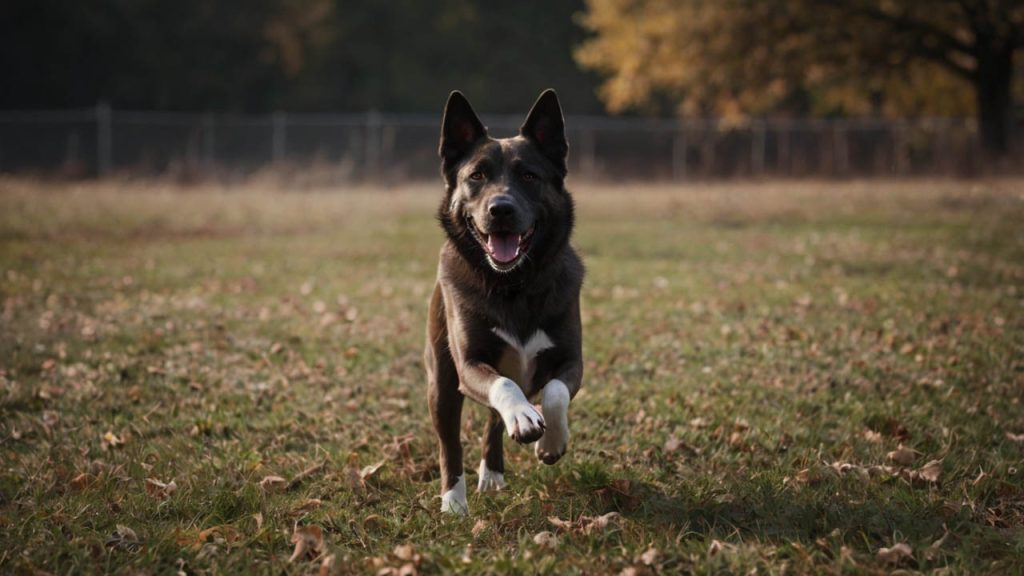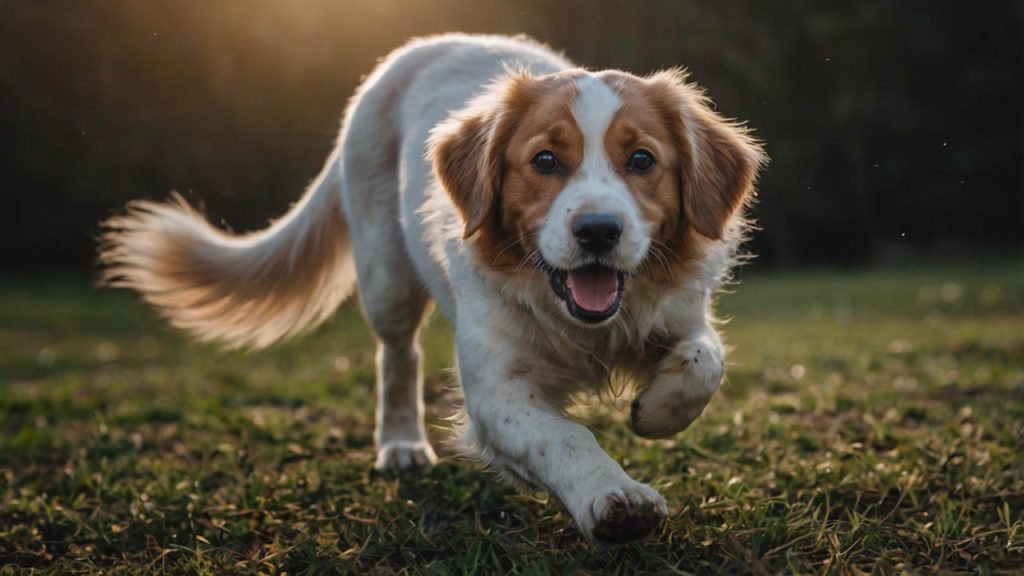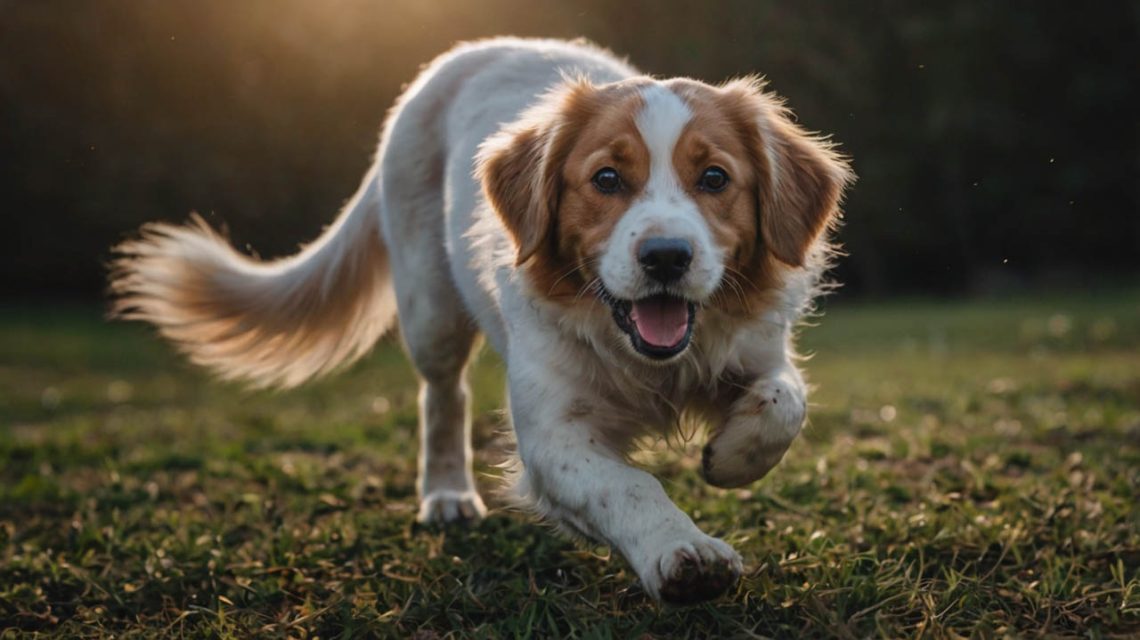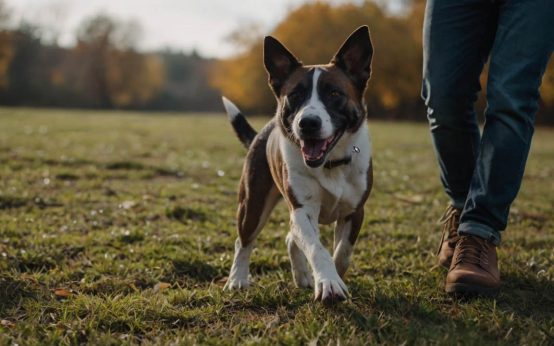Introduction: Master the Classic Paw Shake Command
Learning how to teach a dog to shake a paw represents one of the most rewarding training experiences for both dogs and their owners. This timeless trick not only showcases your dog’s intelligence but also strengthens the bond between you through positive interaction and communication. Moreover, according to the American Kennel Club, dogs that master basic tricks like paw shaking demonstrate improved overall obedience and respond better to advanced training commands.
When you understand how to teach a dog to shake a paw correctly, you’re establishing fundamental training principles that extend beyond this single trick. Research from veterinary behaviorists at Cornell University indicates that dogs engaging in regular trick training show 45% better focus and attention compared to untrained dogs. Furthermore, the mental stimulation provided through learning new commands helps prevent behavioral issues stemming from boredom and excess energy.
Successfully mastering how to teach a dog to shake a paw requires patience, consistency, and understanding of canine learning psychology. This comprehensive guide provides scientifically-backed methods that work for dogs of all ages, breeds, and temperaments. Additionally, you’ll discover troubleshooting techniques for common challenges and advanced variations that keep training engaging and progressive.
Why Teaching Your Dog to Shake a Paw Matters
Building Communication and Trust Through Paw Training
Understanding how to teach a dog to shake a paw goes far beyond creating an entertaining party trick. This fundamental command establishes clear communication channels between you and your canine companion. Furthermore, the process of teaching paw shaking creates predictable interaction patterns that reduce anxiety and build confidence in nervous or shy dogs.
The physical act of offering a paw requires significant trust from your dog’s perspective. Dogs naturally protect their paws as vulnerable body parts essential for mobility and survival. Therefore, when your dog willingly places their paw in your hand, they’re demonstrating deep trust and acceptance of your leadership. This trust-building aspect makes paw shaking particularly valuable for rescue dogs or those with traumatic backgrounds.
Teaching this command also provides practical benefits for everyday care. Dogs comfortable with paw handling tolerate nail trimming, paw cleaning, and veterinary examinations more easily. Moreover, studies from the University of Pennsylvania School of Veterinary Medicine show that dogs trained to shake experience 50% less stress during routine paw maintenance compared to untrained dogs.

Cognitive Benefits of Teaching Dogs to Shake a Paw
Learning how to teach a dog to shake a paw stimulates multiple cognitive functions simultaneously. The command requires dogs to process verbal cues, interpret body language, and coordinate physical movements. Subsequently, this multi-sensory engagement strengthens neural pathways and enhances overall learning capacity.
Mental stimulation through trick training proves especially important for intelligent breeds prone to destructive behaviors when bored. Border Collies, German Shepherds, and Poodles particularly benefit from regular training sessions that challenge their problem-solving abilities. Furthermore, senior dogs practicing learned tricks maintain better cognitive function and show slower mental decline compared to inactive peers.
The concentration required for mastering paw shaking improves impulse control across various situations. Dogs must resist immediately grabbing for treats and instead wait for specific commands. Additionally, this self-control translates to better behavior around food, reduced jumping on visitors, and improved leash manners during walks.
How to Teach a Dog to Shake a Paw: Essential Preparation
Gathering the Right Training Tools and Environment
Before beginning how to teach a dog to shake a paw training, organize your supplies and space for optimal success. High-value treats serve as primary motivators during initial learning phases. Choose soft, aromatic options like small cheese cubes, freeze-dried liver, or commercial training treats that your dog finds irresistible. Moreover, keep treat pieces tiny—about pea-sized—to maintain interest without overfeeding.
A quiet, distraction-free environment proves crucial for initial training sessions. Select a familiar room where your dog feels comfortable and secure. Furthermore, remove toys, turn off televisions, and ensure other pets remain elsewhere during practice. This focused setting allows your dog to concentrate fully on learning the new command without competing stimuli.
Consider using a clicker for precise behavior marking, though it’s not absolutely necessary for teaching paw shaking. Clickers provide consistent, distinct sounds that clearly communicate the exact moment of correct behavior. Additionally, research shows clicker-trained dogs learn new behaviors 40% faster than those using verbal markers alone.
Understanding Your Dog’s Learning Style and Motivation
Every dog possesses unique learning preferences when discovering how to teach a dog to shake a paw. Visual learners respond strongly to hand signals and body positioning. These dogs watch your movements intently and often mirror physical cues naturally. Therefore, emphasize clear, consistent gestures alongside verbal commands for optimal results.
Auditory learners focus primarily on voice tone and verbal cues. They distinguish between similar-sounding words and respond to whispered commands. Subsequently, maintain consistent pronunciation and inflection when teaching these dogs to ensure clear understanding.
Kinesthetic learners benefit from hands-on guidance and physical manipulation. They understand concepts through touch and movement rather than observation alone. Furthermore, these dogs often require gentle paw lifting during initial training phases to comprehend the desired behavior.
Step-by-Step Guide: How to Teach a Dog to Shake a Paw
Phase 1: Establishing the Foundation Behavior
Begin how to teach a dog to shake a paw by having your dog sit comfortably in front of you. This starting position ensures balance and focus throughout the learning process. Hold a treat in your closed fist at your dog’s chest level, allowing them to smell but not grab it. Moreover, most dogs naturally paw at your hand attempting to access the treat.
The instant your dog’s paw makes contact with your hand, immediately say “Yes!” or click, then open your fist to deliver the treat. This precise timing creates clear associations between pawing and rewards. Furthermore, enthusiastic praise reinforces the positive experience and encourages repetition.
Repeat this sequence 10-15 times during your first session, maintaining high energy and excitement. If your dog doesn’t naturally paw, gently tap their leg or tickle behind their paw to encourage lifting. Additionally, some dogs respond better to holding the treat slightly to one side, making pawing more likely than jumping or mouthing.
Phase 2: Adding the Verbal Command
Once your dog consistently offers their paw for the closed-fist treat, introduce the verbal cue “shake” or “paw.” Say the command clearly immediately before presenting your fist. Subsequently, this timing helps your dog associate the word with the upcoming action.
Practice this combination in sets of five repetitions, taking brief breaks between sets. During breaks, practice other known commands or engage in light play. Furthermore, varying activities prevents mental fatigue and maintains training enthusiasm.
Gradually transition from closed fist to open palm over several training sessions. Start by occasionally presenting an empty open hand after saying “shake.” Moreover, reward from your other hand when your dog correctly places their paw in your palm. This progression teaches that the behavior itself, not visible treats, produces rewards.
Phase 3: Perfecting the Shake a Paw Technique
Refining how to teach a dog to shake a paw involves adding duration and proper form. When your dog places their paw in your hand, gently hold it for one second before releasing and rewarding. Gradually increase holding time to 3-5 seconds over multiple sessions. Furthermore, this duration training prevents grabbing or scratching behaviors.
Introduce gentle up-and-down shaking motions while holding your dog’s paw. Start with minimal movement, progressively increasing to natural handshake motions. Additionally, practice with different hand positions—sometimes higher, sometimes lower—ensuring your dog adapts to variations.
Add a release cue like “okay” or “done” to signal shake completion. Clear endpoints prevent confusion about when the behavior ends. Moreover, consistent release cues apply to other commands, creating comprehensive obedience structure.

Advanced Techniques: How to Teach a Dog to Shake a Paw Like a Professional
Teaching Left and Right Paw Discrimination
Expand how to teach a dog to shake a paw by teaching specific paw selection. Introduce distinct commands like “shake” for right paw and “other paw” for left. This differentiation challenges cognitive abilities while doubling your dog’s trick repertoire. Furthermore, research indicates dogs capable of left-right discrimination show enhanced problem-solving skills.
Begin by positioning yourself to naturally encourage one specific paw. Sit slightly to your dog’s left when requesting their right paw, making that movement more comfortable. Subsequently, reward only correct paw attempts while gently ignoring incorrect offers.
Practice random alternation between paws to ensure genuine understanding rather than pattern recognition. Use sequences like right-right-left-right-left to maintain unpredictability. Additionally, incorporate paw discrimination into daily routines, requesting specific paws before meals or walks.
Creating Impressive Shake Variations
Transform basic paw shaking into entertaining variations that showcase your training skills. High-fives require raising your hand vertically instead of extending horizontally. Most dogs naturally adjust paw height to meet your hand position. Therefore, gradually raise your hand over several sessions until achieving the classic high-five position.
Wave training builds upon shake foundations by removing hand contact. Start with normal shakes, progressively increasing distance between your hand and your dog’s paw. Furthermore, add the verbal cue “wave” while using a distinct waving hand motion as the visual signal.
Double paw shakes challenge coordination and balance. Once single paw shaking becomes reliable, request both paws simultaneously. Moreover, smaller dogs often master this easier due to lower center of gravity, while larger breeds may need support initially.
Troubleshooting: How to Teach a Dog to Shake a Paw Despite Challenges
Overcoming Common Training Obstacles
When learning how to teach a dog to shake a paw, various challenges may arise requiring specific solutions. Dogs refusing to lift their paws might have physical discomfort or past negative experiences. Examine paws for injuries, overgrown nails, or sensitivity. Furthermore, consult veterinarians if physical issues seem present.
Excessive pawing or scratching indicates overenthusiasm requiring impulse control training. Implement “wait” commands before shake requests, teaching patience and self-control. Additionally, reward only gentle paw placement, withdrawing attention for forceful or scratching attempts.
Dogs confusing shake with other commands need clearer differentiation between cues. Ensure distinct hand signals and verbal commands for each behavior. Moreover, practice commands separately before combining them in sequences to prevent confusion.
Fear or reluctance around paw handling requires gradual desensitization. Start by briefly touching paws during calm moments, immediately providing treats. Subsequently, increase handling duration and intensity while maintaining positive associations through rewards and praise.
Breed-Specific Considerations
Different breeds require modified approaches when discovering how to teach a dog to shake a paw. Brachycephalic breeds like Bulldogs and Pugs may struggle with balance during paw lifting. Provide stable surfaces and consider teaching shake from a standing position. Furthermore, keep sessions brief to prevent breathing difficulties from excitement.
Giant breeds need adjusted hand positions accommodating their size. Sit in a chair or kneel to reach comfortable heights for both you and your dog. Additionally, ensure adequate space for movement without cramping or discomfort.
Small breeds might feel intimidated by looming human presence during training. Sit or lie on the floor creating less threatening positions. Moreover, use extra-small treats preventing choking hazards while maintaining motivation.
Herding breeds often offer paws naturally as part of their instinctive behaviors. Channel this tendency productively by requiring specific commands before rewarding paw offers. Therefore, prevent demanding pawing behaviors while reinforcing controlled responses.
Creating an Optimal Training Schedule for Teaching Dogs to Shake a Paw
Structuring Daily Training Sessions
Successful how to teach a dog to shake a paw training requires consistent, well-planned practice schedules. Begin with two 5-minute sessions daily, ideally during your dog’s alert periods. Morning sessions after bathroom breaks often yield best results when dogs feel refreshed. Furthermore, evening sessions before dinner capitalize on food motivation.
Week 1 focuses on foundation behaviors and initial paw targeting. Conduct 10-15 repetitions per session, always ending on successful attempts. Additionally, maintain training logs documenting progress and challenges for reference.
Week 2 introduces verbal commands and reduces treat dependency. Practice in different rooms to promote generalization. Moreover, involve family members ensuring consistent commands across all handlers.
Week 3 emphasizes refinement and duration. Add distractions gradually, practicing near windows or with background noise. Subsequently, this proofing process ensures reliable performance in various environments.
Week 4 and beyond maintain skills through intermittent practice. Incorporate shake into daily routines rather than formal sessions. Therefore, the behavior becomes natural part of regular interaction.
Tracking Progress and Adjusting Strategies
Monitor your dog’s learning curve when mastering how to teach a dog to shake a paw. Document success rates, noting percentage of correct responses per session. This data reveals learning patterns and identifies plateaus requiring strategy adjustments. Furthermore, video recordings help identify subtle training inconsistencies you might miss during live sessions.
Adjust difficulty based on performance metrics. If success rates drop below 80%, simplify requirements temporarily. Conversely, increase challenges when dogs achieve 95% accuracy consistently. Additionally, introduce new elements like duration or distractions gradually to maintain engagement without overwhelming.
Recognize individual learning speeds vary significantly between dogs. Some master shaking within days while others require weeks of patient practice. Moreover, factors like age, previous training experience, and breed characteristics influence learning rates.
Incorporating Paw Shaking into Daily Life and Advanced Training
Practical Applications Beyond Tricks
Transform how to teach a dog to shake a paw from isolated trick to functional behavior. Use shake as a greeting ritual replacing jumping on visitors. Guests appreciate controlled interactions, and your dog learns appropriate social behavior. Furthermore, children especially enjoy this gentle interaction method.
Implement shake during grooming and healthcare routines. Request paw shakes before nail trimming, creating positive associations with handling. Additionally, regular paw manipulation through shaking helps identify injuries or abnormalities early.
Utilize shake for mental stimulation during recovery periods or bad weather. Unlike physical exercise, trick training engages minds without requiring extensive movement. Moreover, practicing variations prevents boredom while maintaining cognitive sharpness.
Building Complex Behavioral Chains
Once mastering how to teach a dog to shake a paw, combine it with other commands creating impressive sequences. Develop “conversation” routines where dogs shake, speak, then shake again. These complex chains challenge memory and sequencing abilities. Furthermore, audiences love watching elaborate trick demonstrations.
Create themed routines for special occasions or therapy work. Teach sequences like shake, pray (paws together), and wave for holiday gatherings. Additionally, therapy dogs use paw shaking to initiate gentle interactions with patients.
Film your dog’s shake variations for social media or training portfolios. Document progress from initial learning through advanced variations. Moreover, sharing success stories inspires other dog owners while building community connections.
The Science Behind How to Teach a Dog to Shake a Paw
Understanding Canine Learning Psychology
Neuroscience research reveals fascinating insights about how to teach a dog to shake a paw effectively. Dogs’ brains release dopamine during successful trick completion, creating biochemical rewards reinforcing learning. This natural reward system explains why positive reinforcement proves more effective than punishment-based methods. Furthermore, studies from Duke University’s Canine Cognition Center demonstrate that reward-trained dogs show increased dendritic branching in learning-related brain regions.
Operant conditioning principles govern paw shake learning. The behavior (offering paw) followed by positive consequence (treat/praise) increases behavior frequency. Additionally, variable reinforcement schedules—rewarding intermittently rather than constantly—create stronger, more persistent behaviors.
Mirror neurons in dogs’ brains activate both when performing and observing paw shaking. This biological mechanism explains why dogs often learn faster watching other dogs demonstrate tricks. Therefore, if possible, let your dog observe experienced dogs performing paw shakes during training.
Classical conditioning also influences shake training success. Dogs associate environmental cues like training location or your body position with upcoming training. Subsequently, consistent environmental factors accelerate learning while frequent changes may slow progress.
Optimal Learning Conditions and Timing
Circadian rhythms affect training effectiveness when teaching how to teach a dog to shake a paw. Most dogs show peak alertness during crepuscular hours—dawn and dusk—aligning with ancestral hunting patterns. Training during these natural activity periods often yields superior results. Moreover, avoiding post-meal sluggishness improves focus and motivation.
Temperature impacts concentration and comfort during training. Moderate temperatures between 65-75°F provide optimal learning conditions. Extreme heat causes panting and distraction, while cold temperatures make dogs reluctant to sit on cold surfaces. Furthermore, ensure adequate ventilation preventing stuffiness that induces drowsiness.
Stress hormones like cortisol inhibit learning and memory formation. Creating calm, positive training environments minimizes stress, optimizing cognitive function. Additionally, ending sessions with success maintains positive associations encouraging future training enthusiasm.
Conclusion: Your Path to Paw Shake Training Success
Mastering how to teach a dog to shake a paw opens doors to enhanced communication, stronger bonds, and expanded training possibilities with your canine companion. Through patience, consistency, and positive reinforcement, you’ve learned techniques that extend far beyond this single trick. Moreover, the principles discovered—timing, motivation, and progressive training—apply to all aspects of dog training and behavior modification.
Remember that every dog learns at their own pace when discovering how to teach a dog to shake a paw. Some dogs master the basics within days, while others require weeks of patient practice. Furthermore, celebrating small victories throughout the journey maintains motivation for both trainer and dog. The skills developed together create foundations for lifelong learning and mutual understanding.
The paw shake command represents more than just an adorable trick; it’s a gateway to improved behavior, enhanced communication, and enriched daily interactions. Your dog now possesses a polite greeting alternative, a cognitive challenge, and a bonding activity you’ll enjoy for years. Additionally, the confidence gained through successful training transfers to other life situations, creating a more well-adjusted, happy pet.
Take action today by starting with just five minutes of paw shake training. Begin with the basic paw targeting exercise, using your dog’s favorite treats as motivation. Most importantly, maintain enthusiasm and patience throughout the process, remembering that positive experiences create lasting learning. Share your success stories with fellow dog owners, inspiring them to embark on their own training journeys and strengthen their canine relationships through the simple yet powerful act of teaching their dog to shake a paw.



 How to Teach a Dog to Shake a Paw
How to Teach a Dog to Shake a Paw